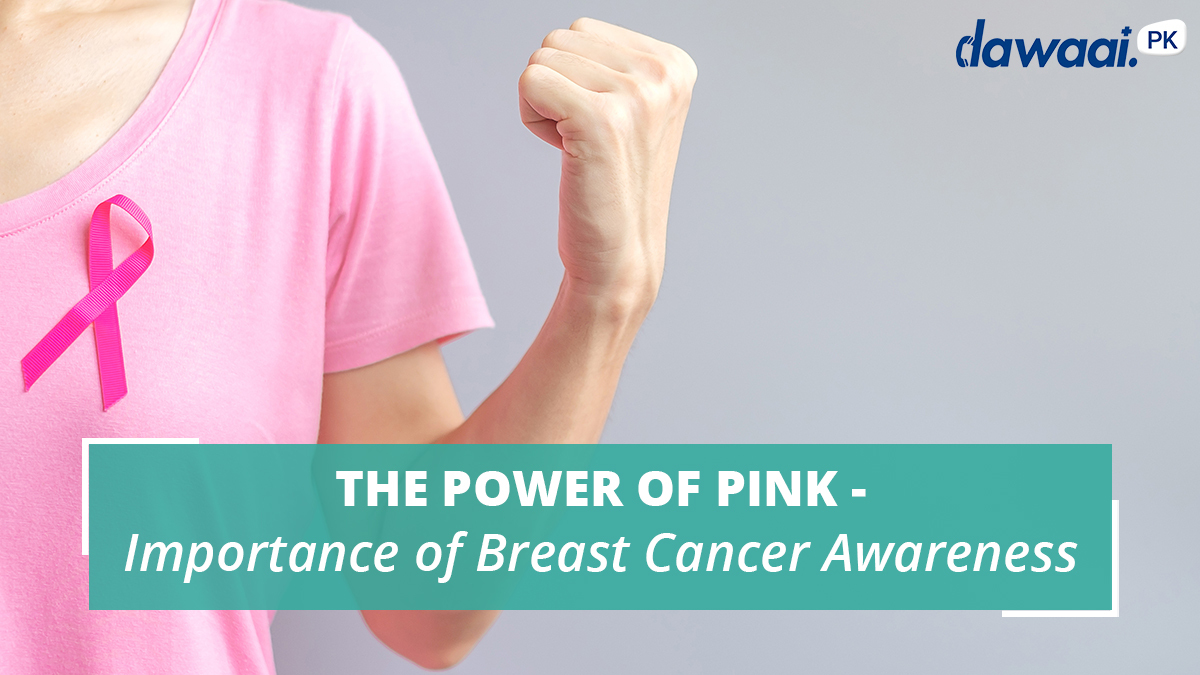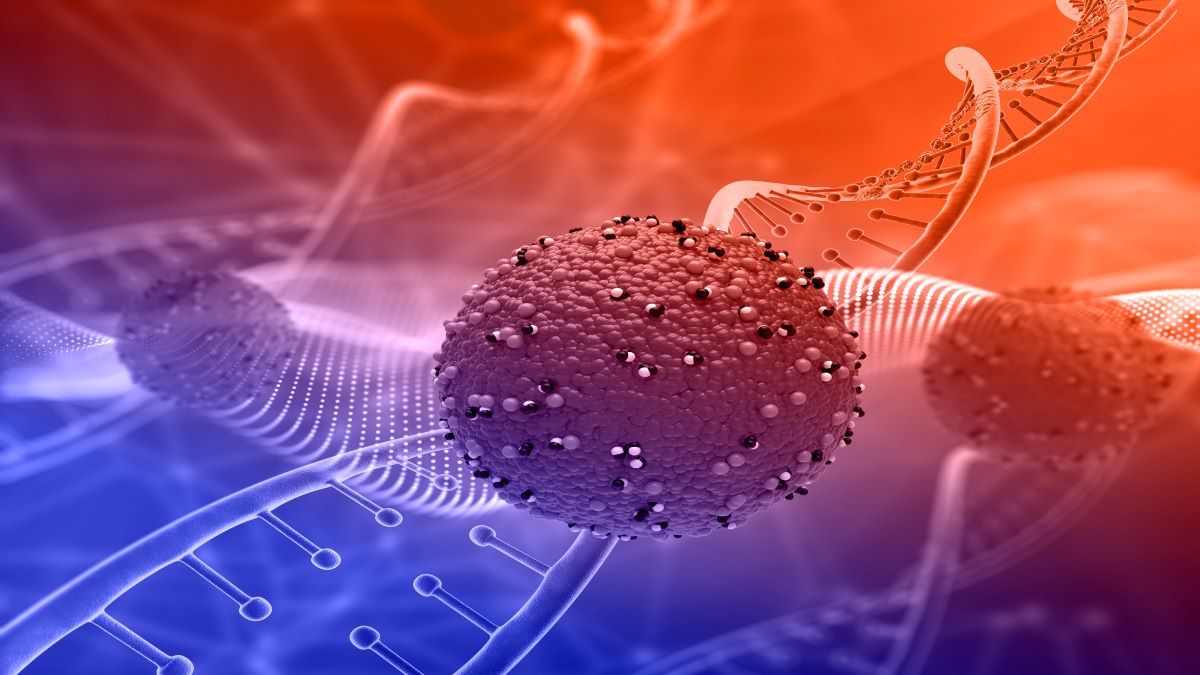Medically reviewed by Dr. Unsa Mohsin.
This blog reaffirms the critical nature of breast cancer awareness by educating about how it is contracted, what one can do to reduce their risk, the importance of routine screening, and the critical nature of early detection to save lives.

According to WHO In 2020, there were 2.3 million new cases of breast cancer and 685 000 deaths worldwide. With these numbers, the likelihood that this disease will affect a large number of people is extremely high. Therefore, do you truly understand what breast cancer is? Are you aware of the cause and symptoms? Most importantly, are you aware that if left untreated, it can claim your life?
Pakistan has the highest breast cancer incidence rate among Asian countries, with one in every nine women at risk of developing the disease during their lifetime. Due to widespread misconceptions about the disease’s etiology and socioeconomic factors, Pakistani women have extremely low rates of early detection and diagnose breast cancer at advanced stages, resulting in decreased survival chances. Early detection is critical for cure.
How does one get it?
Despite scientific advancements, no one truly understands why breast cancer develops in individuals. We do know that it is caused by a mutation in a gene. Certain gene mutations are inherited from parents and account for approximately 5-10% of breast cancer cases worldwide, while approximately 90-95% of these are caused by a fortuitous gene mutation that occurs during a person’s lifetime. These mutations could be the result of a change in lifestyle, being overweight or possibly underweight, using menopausal hormones, or being exposed to environmental toxins, but no one knows for certain.
Why should someone with no history care about breast cancer?
We know that certain factors, such as inheriting a gene mutation, increase our risk of developing breast cancer. However, not everyone with an inherited mutation, obesity, or who use menopausal hormones, develops breast cancer. The majority, in fact, do not. We already know that being female and growing older are two of the most significant risk factors for breast cancer. However, some men and young women are diagnosed with breast cancer. To clarify, anyone is at risk of developing breast cancer. It makes no difference if you are in good health, regularly exercise, maintain an optimal weight, and have no family history of the disease. These, however, do reduce your chances of contracting it, but one cannot be certain.

What should you know about the disease?
There has never been a better time to learn about breast cancer than right now. These diseases have their own characteristics and behaviors, which we now know. There are at least four primary types of breast cancer, with a total of at least six additional subtypes for one of the four. As a result of this information, scientists have been able to learn more about the different types of breast cancer and develop drugs that will fight cancer cells while also preventing them from returning. Even before breast cancer has grown large enough to be felt, mammograms are an effective early detection tool. More treatment options are available and the outlook is better if breast cancer is detected early.
Elective procedures and tests, such as mammograms, were put off until 2020 at a number of medical facilities. Pandemic-related anxiety drove women all over the world to put off or cancel health checkups even when they were available. If you haven’t had a mammogram in a while and haven’t rescheduled it, now is the time to do so.
What are the symptoms?

Frequently, women become aware of symptoms on their own. That is why it is critical to understand how your breasts look and feel on a daily basis. It is critical to understand that it is not always a lump. Although a breast lump is the most frequently encountered symptom of breast cancer, it is far from the only one.
1. Swelling of a region or the entire breast
2. Skin irritability
3. Retraction of the nipple
4. Nipple or breast skin redness, scaliness, or thickening
5. Nipple discharge
Symptoms can also manifest themselves in areas other than the breast. Breast cancer is capable of spreading to the lymph nodes. Prior to the primary breast tumor growing to a size that can be felt, it may cause swelling or a lump around the collarbone or under the arm.
Can you prevent breast cancer?
Even among high-risk women, lifestyle changes have been shown to reduce the risk of breast cancer. If your weight is healthy, make an effort to maintain it. If you need to lose weight, consult your physician about the healthiest ways to do so. Reduce your daily caloric intake while gradually increasing your physical activity.
Participate in some form of physical activity. Physical activity can help you maintain a healthy weight, which is beneficial for breast cancer prevention. The majority of healthy individuals should aim for at 150 minutes of moderate aerobic activity or 75 minutes of strenuous aerobic activity per week, in addition to strength training twice a week.
Self-examinations on a monthly basis are critical. Although self-examination of the breasts does not replace routine mammograms, they remain an important component of your breast cancer screening regimen. Even if your mammography results are normal, you should contact your physician immediately if you notice a breast lump.
Today, National Breast Cancer Awareness Month is about much more than raising awareness of the disease; it is about raising awareness of the obstacles that remain, removing barriers to care for those affected, reducing disparities across races, genders, and ethnicities, and reminding people that one in every eight women will be diagnosed with breast cancer during her lifetime.
Let’s fight breast cancer together! Click here to avail 76% off on Bilateral Breast Test (Ultrasound).

References
Broster, A., 2021. A drop in mammograms during coronavirus could have serious implications in years to come. Forbes. Available at: https://www.forbes.com/sites/alicebroster/2021/01/04/a-drop-in-mammograms-during-coronavirus-could-have-serious-implications-in-years-to-come/?sh=15732421b9c0
Cancer.org, 2019. Breast cancer risk factors you cannot change: Genetic risk factors. American Cancer Society. Available at: https://www.cancer.org/cancer/breast-cancer/risk-and-prevention/breast-cancer-risk-factors-you-cannot-change.html#:~:text=About%205%25%20to%2010%25%20of,the%20BRCA1%20or%20BRCA2%20gene.
CDC, 2021. What are the symptoms of breast cancer? Centers for Disease Control and Prevention. Available at: https://www.cdc.gov/cancer/breast/basic_info/symptoms.htm
Edward R. Laskowski, M.D., 2021. How much exercise do you really need? Mayo Clinic. Available at: https://www.mayoclinic.org/healthy-lifestyle/fitness/expert-answers/exercise/faq-20057916#:~:text=For%20most%20healthy%20adults%2C%20the,of%20moderate%20and%20vigorous%20activity.
Freevector, 2021. Reaching hands breast cancer ribbon vector vector art & graphics. FreeVector.com. Available at: https://www.freevector.com/reaching-hands-breast-cancer-ribbon-vector-29099
Khan, N.H. et al., 2021. Better Reporting and awareness campaigns needed for breast cancer in P: CMAR. Cancer Management and Research. Available at: https://www.dovepress.com/better-reporting-and-awareness-campaigns-needed-for-breast-cancer-in-p-peer-reviewed-fulltext-article-CMAR
WHO, 2020. Facebook. Available at: https://m.facebook.com/whophilippines/photos/a.486389418141002/2704792339634021/?type=3&source=57
WHO, W.H.O., 2020. The most common causes of #cancer death. Available at: https://mobile.twitter.com/WHO/status/1224715803515392001





